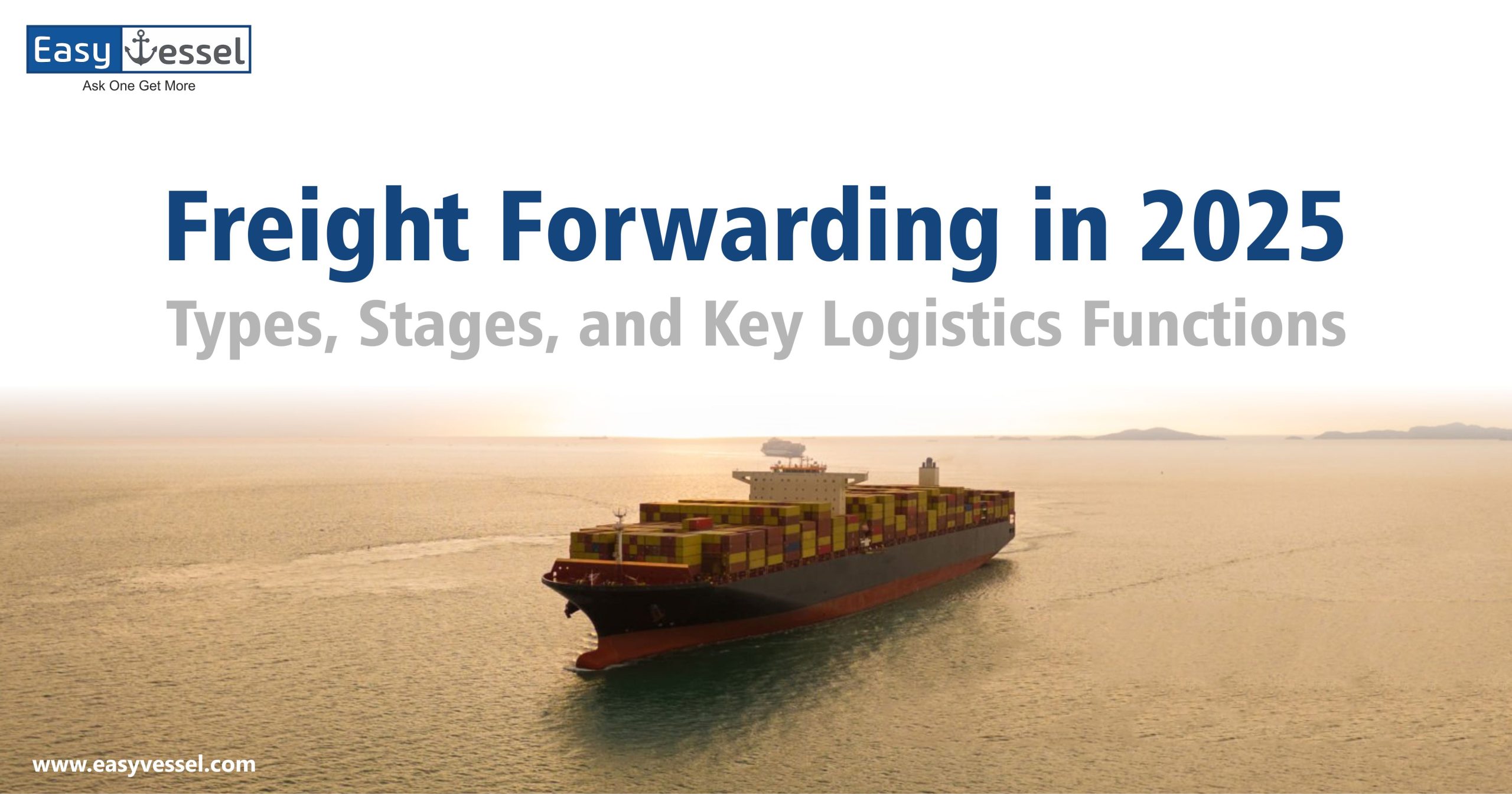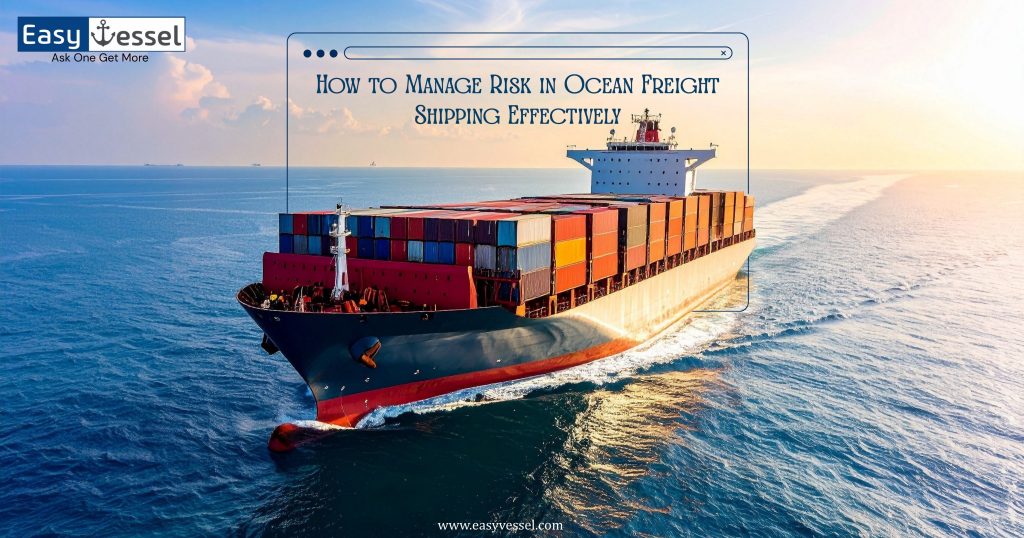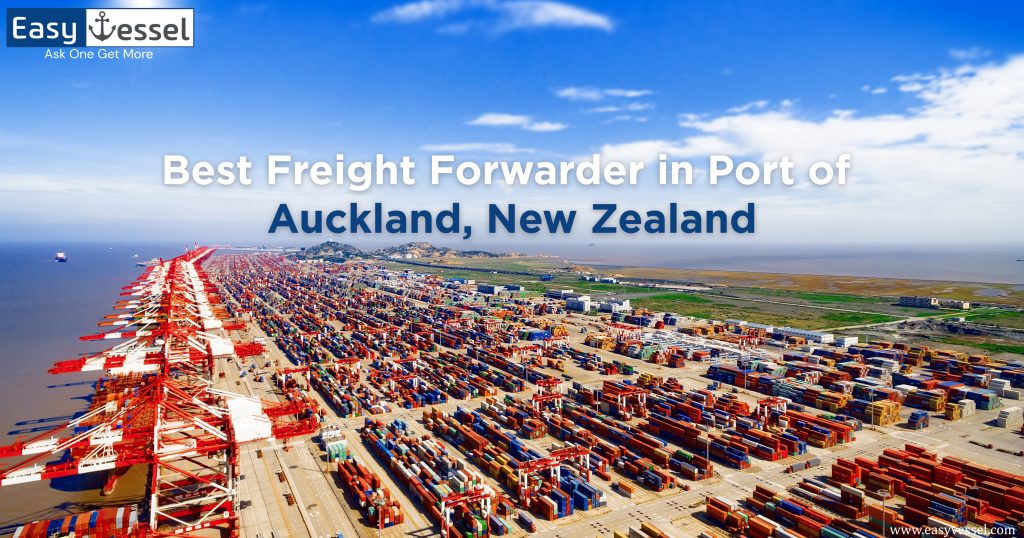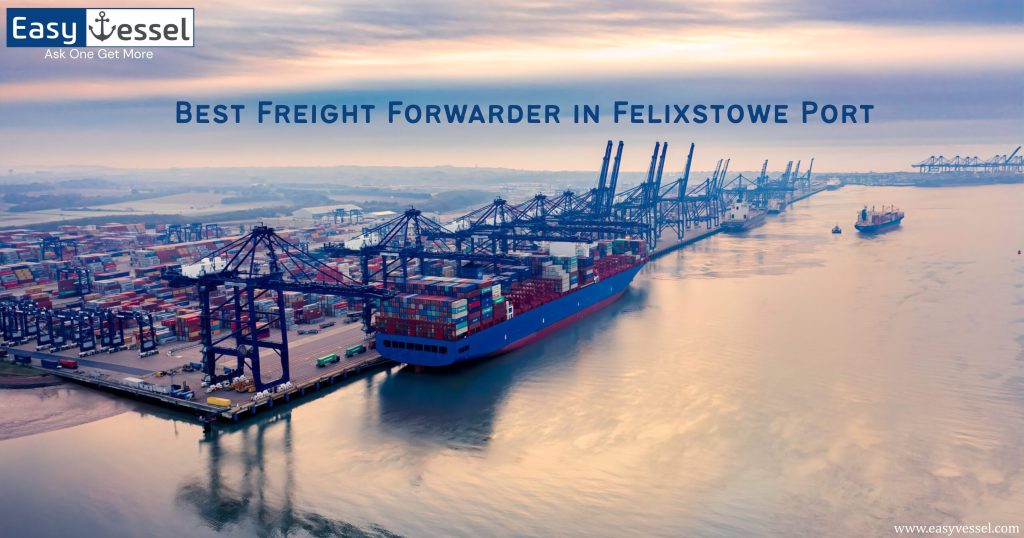Freight forwarding remains the backbone of global trade, evolving in 2025 with innovative technologies and strategies to meet the demands of modern freight and logistics. Understanding the freight forwarding process is crucial whether you’re an established business or a startup venturing into international shipping. Let’s delve into the types, stages, and key functions of freight and logistics while highlighting how freight forwarders can streamline processes and optimize freight charges.
What is Freight Forwarding?
Freight forwarding manages and coordinates shipments across various transportation modes to ensure goods reach their destination efficiently. Freight forwarders act as intermediaries between shippers and transportation services, handling freight and logistics operations and offering end-to-end shipping solutions.
What Does a Freight Forwarder Do?
A freight forwarder is a logistics expert who coordinates and manages the freight forwarding process, ensuring smooth and efficient delivery. Their primary responsibilities include:
- Shipment Planning: Organizing routes, modes of transport, and schedules for cost-effective and timely delivery.
- Documentation Management: Handling customs forms, bills of lading, and compliance paperwork to meet regulatory requirements.
- Carrier Coordination: Negotiating with carriers to secure competitive freight charges and reliable services.
- Customs Clearance: Ensuring goods meet import/export laws for hassle-free border crossings.
- Cargo Tracking: Providing real-time updates on shipment progress within the freight forwarding process.
Read More: What Freight Forwarders Do: A Complete Guide to Their Services
Types of Freight Forwarding in 2025
Freight forwarding continues to evolve in 2025, offering services tailored to modern freight and logistics needs. Here’s a breakdown of the primary types of freight forwarding that businesses can rely on:
1. Air Freight Forwarding
Air freight forwarding is ideal for time-sensitive shipments, offering the fastest delivery method within the freight forwarding process. With technological advancements and fuel efficiency, air freight is becoming more sustainable and cost-effective.
Key Features:
- Fast transit times for urgent shipments.
- Suitable for high-value and perishable goods.
- Improved tracking and visibility for real-time updates within the freight and logistics sector.
2. Ocean Freight Forwarding
Ocean freight is the backbone of international trade, particularly for bulk and heavy shipments. It remains a cost-effective solution for long-distance transport.
Key Features:
- Economical for large volumes.
- Options include full container load (FCL) and less than container load (LCL).
- Focus on sustainability through energy-efficient shipping lines.
3. Road Freight Forwarding
Road freight is essential for last-mile delivery and regional transport in freight and logistics. In 2025, road freight will benefit from eco-friendly vehicles and optimized logistics routes.
Key Features:
- Flexible for short and medium distances.
- Suitable for a wide range of goods, including refrigerated items.
- Advanced GPS and telematics for efficient route planning.
- Optimized logistics routes within the freight forwarding process.
4. Rail Freight Forwarding
Rail freight is a growing choice for land-based transport, offering a balance between cost and speed within the freight and logistics industry, particularly for long distances across continents.
Key Features:
- Cost-effective for heavy and bulk goods.
- Lower carbon emissions compared to road transport.
- Reliable schedules and capacity for large shipments.
5. Multimodal Freight Forwarding
Multimodal forwarding combines multiple modes of transport, such as air, sea, road, or rail, to provide an efficient and seamless shipping solution or freight forwarding process.
Key Features:
- Optimal use of different transport modes for cost and time efficiency.
- Simplified documentation and unified tracking systems.
- Reduces bottlenecks in the supply chain.
6. Digital Freight Forwarding
In 2025, digital freight forwarding will take center stage, leveraging advanced technology to enhance efficiency and transparency.
Key Features:
- AI-powered route optimization and predictive analytics.
- Blockchain for secure and tamper-proof documentation.
- Real-time cargo tracking and automated updates.
- Enhancing efficiency in freight and logistics.
The Future of Freight Forwarding in 2025
The freight forwarding industry in 2025 is defined by innovation, sustainability, and adaptability. Businesses can choose the type of freight forwarding that aligns with their specific needs, ensuring cost-effective and environmentally friendly solutions.
Whether air, sea, road, rail or a combination, the right freight forwarding choice is critical to streamlining supply chains and maintaining a competitive edge in global trade.
Stages of Freight Forwarding
The freight forwarding process involves multiple steps to ensure smooth freight and logistics operations.
Planning & Quotation
- Freight forwarders analyze your shipping requirements, including dimensions, weight, and destination, to provide accurate freight charges.
Documentation
- Handling essential paperwork such as bills of lading, commercial invoices, and customs documentation.
Carrier Selection
- Freight forwarders select reliable carriers for optimal freight and logistics solutions based on cost, delivery timelines, and shipment type.
Customs Clearance
- Managing import/export regulations and ensuring smooth clearance at borders.
Transportation & Tracking
- Providing real-time tracking within the freight forwarding process and updates on the shipment’s progress.
Delivery & Final Reporting
- Ensuring goods are delivered safely and offering post-shipment analysis for continuous improvement.
Key Logistics Functions of Freight Forwarders in 2025
The freight forwarding process includes critical logistics functions that impact global freight and logistics strategies.
- Cost Optimization
- Freight forwarders negotiate with carriers to secure competitive freight charges.
- Risk Mitigation
- Offering insurance services and contingency planning to protect against unforeseen issues.
- Technology Integration
- Utilizing advanced platforms for route optimization, tracking, and data analytics.
- Sustainability
- Embracing green logistics by reducing carbon footprints through intermodal transportation and efficient packaging.
- Customer Support
- Providing 24/7 assistance within the freight forwarding process to address client concerns and ensure smooth operations.
Advantages of Freight Forwarding in 2025
The freight forwarding process offers various benefits for businesses looking to optimize freight and logistics.
- Time Savings
- Freight forwarders handle complex freight and logistics tasks, allowing businesses to focus on their core activities.
- Cost-Effectiveness
- Their expertise in consolidating shipments and negotiating freight charges ensures firms save money.
- Global Reach
- Access to a vast freight and logistics network of carriers and agents facilitates seamless international shipping.
- Compliance Assurance
- Freight forwarders stay updated on changing regulations within the freight forwarding process, ensuring your shipments comply with international laws.
- Freight forwarders stay updated on changing regulations within the freight forwarding process, ensuring your shipments comply with international laws.
Why Freight Forwarders Are Indispensable
With supply chains growing increasingly complex, freight forwarders are indispensable business partners. They bridge the gap between shippers and carriers, offering tailor-made solutions to address unique logistics challenges. Their ability to efficiently manage freight charges, documentation, and transportation makes them essential for global trade.
Partner with Easy Vessel for Your Freight Forwarding Needs
Navigating the complexities of freight forwarding in 2025 doesn’t have to be overwhelming. At EasyVessel, we simplify freight and logistics with comprehensive solutions tailored to your needs. From transparent freight charges to seamless tracking, we ensure your shipments are handled carefully.
Key benefits of choosing EasyVessel:
- Competitive freight charges.
- Advanced tracking for real-time freight and logistics updates and reporting tools.
- A vast network of global carriers.
- 24/7 customer support to address your concerns.
Conclusion
Freight forwarding in 2025 is more than moving goods—it’s about efficiency, sustainability, and leveraging technology to create streamlined logistics solutions. By understanding the freight forwarding process, types, stages, and key functions, businesses can unlock opportunities for growth and cost savings.
Ready to simplify your freight and logistics strategy? Visit Easy Vessel today and experience the future of freight forwarding.
References:
For more insights on freight and logistics and the freight forwarding process, visit Freight Forwarding – Wikipedia.
Frequently Asked Questions
It streamlines shipping by handling logistics, reducing costs, and ensuring timely delivery.
Consider their experience, global network, technology, and cost-effectiveness in freight and logistics.
A Freight Forwarder vs. Freight Brokers differ in their roles: A freight forwarder manages the entire freight forwarding process, while a broker only connects shippers with carriers.
Costs depend on types of freight, transport mode, distance, and customs fees.
Key documents include a bill of lading, commercial invoice, packing list, and customs forms.
It enhances efficiency with real-time tracking, automation, and optimized route planning.
Delays, high freight charges, supply chain disruptions, and regulatory compliance issues.
They save time, reduce costs, and ensure hassle-free international shipping.



